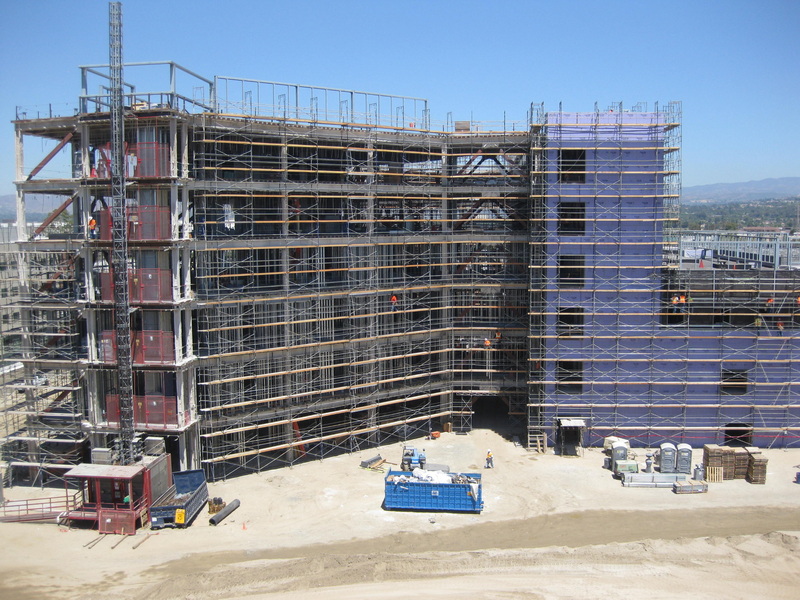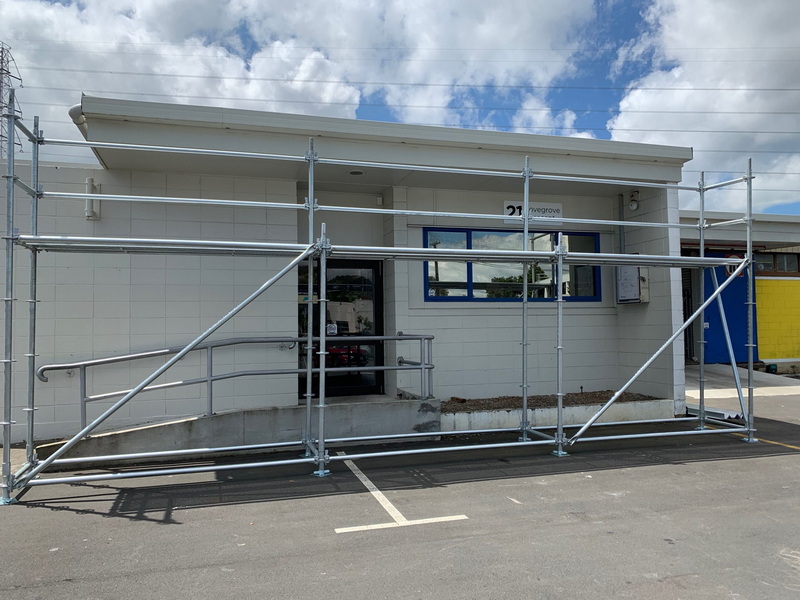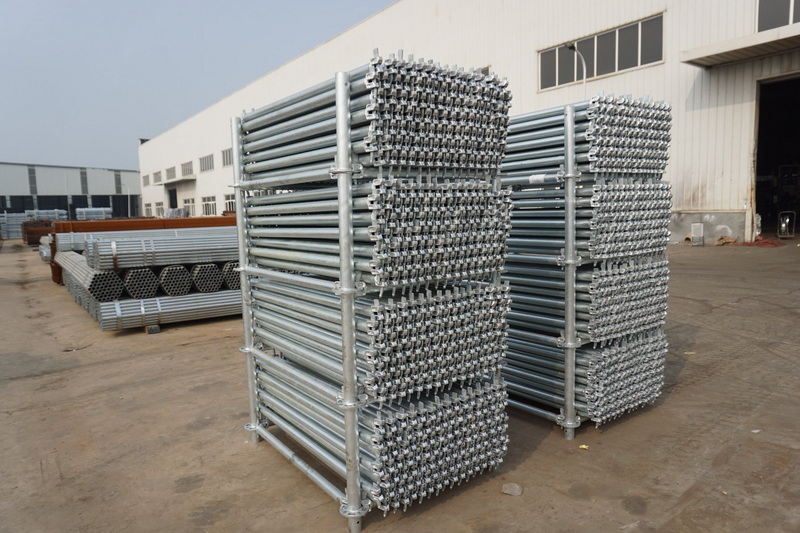Content Menu
● Understanding Ringlock Scaffolding
● Key Factors Affecting Ringlock Scaffolding Cost
>> 1. Project Size and Scope
>> 2. Project Duration
>> 3. Complexity and Customization
>> 4. Material Quality and Type
>> 5. Labor Costs
>> 6. Safety and Compliance
>> 7. Location and Accessibility
● Step-by-Step Guide to Estimating Ringlock Scaffolding Cost
>> Step 1: Calculate the Total Area to be Scaffolded
>> Step 2: Determine the Number of Bays and Lifts
>> Step 3: Estimate Quantity of Components
>> Step 4: Calculate Material Costs
>> Step 5: Add Labor Costs
>> Step 6: Include Additional Costs
● Sample Cost Calculation
● Tips to Reduce Ringlock Scaffolding Cost
● Additional Factors Influencing Cost
>> Project Timeline and Scheduling
>> Weather Conditions
>> Local Regulations and Permits
>> Equipment and Tooling
● Conclusion
● FAQ
>> 1. What factors most affect ringlock scaffolding cost?
>> 2. How do I calculate the amount of scaffolding materials needed?
>> 3. Can renting ringlock scaffolding reduce costs?
>> 4. How does project complexity influence scaffolding cost?
>> 5. Are labor costs included in scaffolding cost estimates?
Estimating the ringlock scaffolding cost accurately is crucial for budgeting and planning construction projects efficiently. Ringlock scaffolding is a popular modular system known for its versatility, strength, and ease of assembly, but its cost can vary significantly depending on several factors. This comprehensive guide will walk you through how to estimate your total ringlock scaffolding cost by analyzing project requirements, material needs, labor, and additional expenses.

Understanding Ringlock Scaffolding
Ringlock scaffolding is a modular scaffolding system characterized by its unique rosette joint, which allows for quick and flexible connections between vertical standards and horizontal ledgers. It is widely used in commercial, industrial, and residential projects due to its adaptability and load-bearing capacity.
Key Factors Affecting Ringlock Scaffolding Cost
1. Project Size and Scope
The overall size of your project directly impacts the amount of scaffolding required. Larger buildings or structures require more standards, ledgers, transoms, and decking materials.
- Height: Taller structures need more lifts, increasing material and labor costs.
- Length and Width: Larger perimeter and depth require more bays and platforms.
2. Project Duration
Longer project durations increase rental costs if scaffolding is hired. For owned scaffolding, extended projects may require additional maintenance and safety inspections, adding to costs.
3. Complexity and Customization
Complex building shapes or special requirements (curves, cantilevers, suspended scaffolds) may require custom components or additional safety features, increasing costs.
4. Material Quality and Type
Ringlock scaffolding components are typically made from galvanized steel or aluminum.
- Galvanized Steel: Durable and corrosion-resistant, generally more affordable.
- Aluminum: Lighter but more expensive; preferred for ease of handling.
5. Labor Costs
Labor involves assembly, dismantling, and inspection. Skilled labor reduces time and risk but may cost more per hour.
6. Safety and Compliance
Additional safety features (guardrails, toe boards, netting) and compliance with local regulations can add to costs.
7. Location and Accessibility
Remote or difficult-to-access sites may incur higher transportation and installation costs.

Step-by-Step Guide to Estimating Ringlock Scaffolding Cost
Step 1: Calculate the Total Area to be Scaffolded
Determine the total surface area that requires scaffolding.
Area=Height×Perimeter
For example, a building 10m tall with a 40m perimeter:
10×40=400 square meters
Step 2: Determine the Number of Bays and Lifts
- Bay length: Typically 2 meters.
- Lift height: Usually 2 meters.
Calculate bays along the length and lifts along the height:
Number of bays=Perimeter/Bay length=40/2=20
Number of lifts=Height/Lift height=10/2=5
Step 3: Estimate Quantity of Components
Using standard component spacing:
- Standards: One at each bay end per lift, plus intermediate perimeters.
- Ledgers and transoms: Horizontal and cross braces per bay and lift.
- Decking: Platform area covering bays.
Step 4: Calculate Material Costs
Estimate costs based on current market prices for:
- Standards
- Ledgers
- Transoms
- Decking boards
- Base plates and jacks
- Couplers and accessories
Example:
If standards cost $30 each and you need 100 standards:
100×30=3000 USD
Step 5: Add Labor Costs
Labor costs vary by region and complexity. Assume an hourly rate and estimate assembly and dismantling time.
Example:
- Assembly: 40 hours at $50/hr = $2000
- Dismantling: 30 hours at $50/hr = $1500
Step 6: Include Additional Costs
- Transportation and delivery fees.
- Rental fees (if applicable).
- Safety equipment (guardrails, netting).
- Inspections and permits.
Sample Cost Calculation
| Item | Quantity | Unit Cost (USD) | Total Cost (USD) |
| Standards | 100 | 30 | 3000 |
| Ledgers | 150 | 20 | 3000 |
| Transoms | 150 | 15 | 2250 |
| Decking | 200 sqm | 10 per sqm | 2000 |
| Base Plates & Jacks | 100 | 5 | 500 |
| Labor (Assembly) | 40 hrs | 50 | 2000 |
| Labor (Dismantling) | 30 hrs | 50 | 1500 |
| Transportation | - | - | 800 |
| Safety Equipment | - | - | 600 |
| Total Estimate |
|
| 16,650 USD |
Tips to Reduce Ringlock Scaffolding Cost
- Plan scaffold layout carefully to minimize material waste.
- Use rental options for short-term projects.
- Combine scaffolding tasks to reduce assembly/dismantling frequency.
- Ensure efficient labor scheduling.
- Regularly maintain scaffolding to avoid costly repairs.
Additional Factors Influencing Cost
Project Timeline and Scheduling
Efficient scheduling can reduce labor costs and rental durations. Delays often increase scaffolding expenses due to extended rental periods and repeated assembly/disassembly.
Weather Conditions
Adverse weather may require additional safety measures or cause delays, increasing costs. Protective coverings or windbreaks can add to material expenses.
Local Regulations and Permits
Compliance with local building codes and safety regulations may require inspections, certifications, or permits, which can add to the overall cost.
Equipment and Tooling
Specialized equipment such as hoists, lifts, or cranes for scaffold assembly can increase costs, especially for high-rise or complex projects.
Conclusion
Estimating your ringlock scaffolding cost requires careful consideration of project size, duration, complexity, material choices, and labor. By following systematic calculation steps and considering all cost factors, you can create an accurate budget and optimize expenditures. Ringlock scaffolding offers excellent value through its modularity and durability, making it a smart investment for a wide range of construction projects.

FAQ
1. What factors most affect ringlock scaffolding cost?
Project size, height, labor, material quality, location, and safety requirements are key cost drivers.
2. How do I calculate the amount of scaffolding materials needed?
Calculate the project perimeter and height, then determine bays and lifts based on standard dimensions.
3. Can renting ringlock scaffolding reduce costs?
Yes, renting is cost-effective for short-term projects, avoiding upfront purchase costs.
4. How does project complexity influence scaffolding cost?
Complex shapes or special requirements increase material needs and labor time, raising costs.
5. Are labor costs included in scaffolding cost estimates?
Labor costs for assembly and dismantling are significant and should always be included in estimates.






















